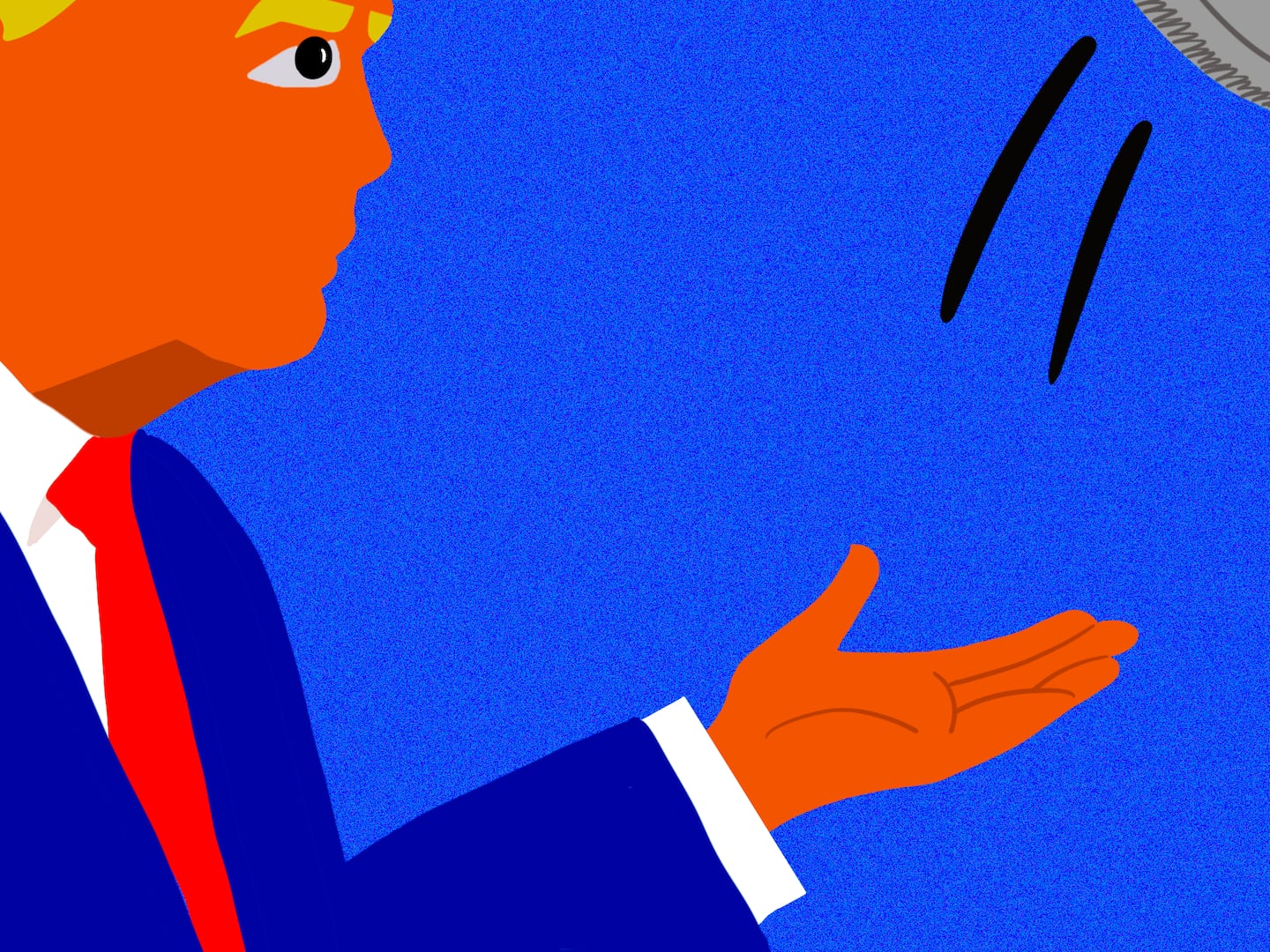
For a long time, the faces of three men dominated the walls of buildings in Chechnya’s capital of Grozny: the republic’s first president, Akhmat Kadyrov, who was assassinated a few years ago; his son and the current president, Ramzan; and Vladimir Putin. Their visages stared down from gigantic banners hung from the rooftops.
Now, the strongmen have company. Beside their portraits hang pictures of round faces framed in hijabs—models wearing a line of Islamic prêt-a-porter. The pictures are promotions for Firdaws (“Paradise”), a new fashion line operated by the younger Kadyrov’s wife, Medni Kadyrova. Both Medni and her husband are proponents of traditional Muslim dress, and the brand made a splashy debut last week on a catwalk at the Royal Mirage Hotel in Dubai.
The line’s first collection—titled “Chechen Lady”—featured loose floor-length, long-sleeved gowns in sumptuous fabrics (velvet, silk, Crepe de Chine) and a palette that ranged from shimmery pastels to bright tropical colors and metallic earth tones. The gowns—often heavily-embroidered and decorated with crystals and pearls—were topped off with tight, matching hijabs.
Kadyrova, who next plans to take her collection to the runways in Saudi Arabia, said her goal was to “conquer the world of Middle East fashion.” She said the designs are inspired by her religious faith (hence the name), and the line’s leading designer, Zarema Yahayeva, also claimed that each gown was divinely-inspired. Before the collection traveled to the United Arab Emirates, the designer said, both dresses and models were blessed by Chechan imams and elders.
Kadyrova’s fashion show is just the latest manifestation of her family’s long-running interest in the Middle East. Ramzan Kadyrov has previously highlighted his visits to Syria, shared tea with Jordan’s Abdullah II, and washed the Holy Kaaba in Mecca with the Saudi prince Khaled Al-Faisal—all part of his ambition, however improbable, to play a more prominent international role in the world of Muslim affairs, says Alexei Malashenko, a Chechen expert at the Carnegie Center in Moscow. To that end, and perhaps to curry favor with sitting leaders, Kadyrov has come down harshly against the Arab Spring. Recently, the president went on Chechen television—posing next to a portrait of Putin and a gold-plated pistol—to accused the West of fomenting the rebellions. “If only it was up to my will, I would do everything to defend Lebanon, Egypt and Syria,” he declared.
Kadyrov’s interest in the Middle East goes beyond the mere political; he has vigorously sought to make Chechan culture conform to more conservative Muslim mores. Ground zero of this push: Chechnya’s women. Kadyrov has said that he wishes “Chechan women looked like real Muslims obeying the nation’s moral rules” and has prohibited women and girls from entering state buildings without having their heads, legs and arms fully covered. (The sight of bare female limbs “prevented me from concentrating on work,” Kadyrov has said.) The dress code is reportedly enforced by intimidation: last year, Human Rights Watch reported that men were shooting paintball guns at women who refused to fully cover up. Diana Markosian, a freelance photographer from Moscow who moved to live and work in Chechnya last year, said her Chechen acquaintances recommended that she should exchange her jeans for a long skirt, for safety reasons. After a few months, Markosian caved. “I finally began to wear a skirt and a headscarf, like most Chechan women, not to attract attention,” she said. On a recent assignment at the Chechen State University, Markosian was stopped by security at the entrance; her skirt, though below-the-knee, as not the required ankle-length. Some women report feeling frustrated by the new dress codes—Milana, a student at the republic’s medical college, told The Daily Beast, “I dress modestly, but any official restrictions make me feel humiliated.”

Such dress codes would have been unthinkable in the fall of 1999, when an endless caravan of Russian tanks and armored vehicles rolled into Chechnya and over 100,000 Chechen refugees fled before Russia’s massive bombing campaign. Most women were refugees back then, outfitted in thick cardigans, flannel bathrobes, woolen scarves, and mud-splattered house slippers.
But thanks to Kadyrov’s policy of generous state and private investments in the reconstruction efforts, Grozny is a far cry from its war days. Skyscrapers, shopping centers and designer boutiques are popping up all over the city. And in spite of the new religious restrictions, beauty salons are crowded and young girls explore the new Zara store, secretly checking out miniskirts and short-sleeved blouses. It may take some time for these young shoppers to embrace Kadyrova’s view of appropriate Chechan fashion—and perhaps as a result, the Firdaws collection made bigger news in the UAE than at home. A hijab “sounds more like an Arab tradition than a historical Chechen headwear,” said Hava Akhmadova, the director of a local youth theater. Akhmadova wears loose headscarves, or often just a slip of silk over her thick blond hair, in the fashion of generations of Chechen women. Most Chechens are still too poor to afford a $3,200 dress, the average price for the Firdaws pieces, she says. When asked what a Chechan Muslim woman would ultimately prefer for her personal style, Akhamdova says it would likely be conservative yet elegant. “A woman should be a puzzle inside and outside.”






